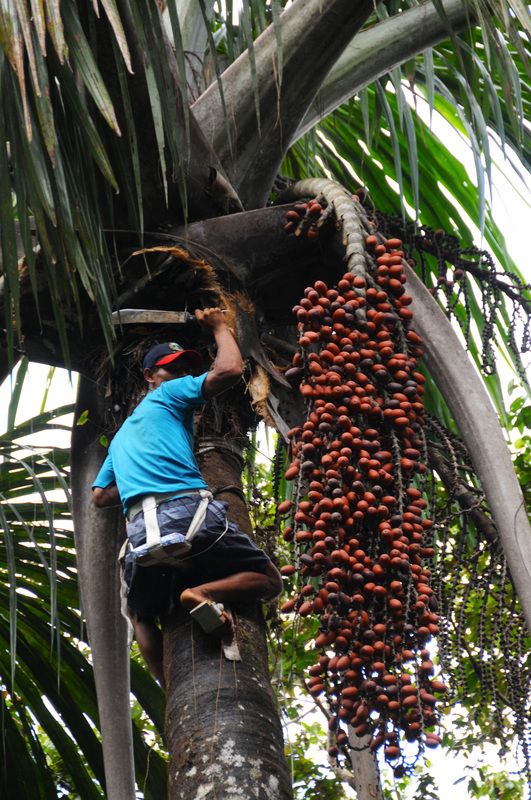Current Projects
Effects of wild and domestic ungulates on riparian restoration
In collaboration with Starkey Experimental Forest & Range, Grande Ronde Model Watershed, Oregon Department of Fish & Wildlife, and PNW Research Station, this long-term research experiment investigates the effects of elk and mule deer on the success of riparian restoration efforts, as well as evaluates deferred rotation cattle grazing systems designed to promote recovery of riparian habitat for salmonids and beef cattle production in the interior Pacific Northwest.
Recent Presentation
Rowland, M. M. Wisdom, B.A. Endress, C. Parks, and K.H. Coe. Effects of Wild Ungulate Herbivory on Riparian Restoration for Salmonids. IUFRO World Congress, Salt Lake City, UT. October 2014


Role of ungulates in influencing vegetation dynamics in forested rangelands
Ungulates can exert a strong influence on the composition and dynamics of plant communities. However, little is known about how ungulate herbivory interacts with episodic disturbances such as fire and stand thinning in affecting trajectories of forest succession. This research focuses on understanding how cattle and elk herbivory interacts with forest management activities to influence the vegetation dynamics of forested rangelands.

Recent publications
Pekin, B.K., M.J. Wisdom, B.A. Endress, B.J. Naylor, and C.G. Parks. 2014. Ungulates help maintain shrub diversity in the absence of episodic disturbance in seasonally arid coniferous forest. PloS One 9(1): e86288. doi:10.1371/journal.pone.0086288
Endress, B.A., M.J. Wisdom, M. Vavra, C.G. Parks, B.L. Dick, B.J. Naylor, and J.M. Boyd. 2012. Effects of ungulate herbivory on aspen, cottonwood, and willow development under forest fuels treatment regimes. Forest Ecology and Management 276: 33-40.
Ecology & management of Brahea aculeata in the tropical dry forests of Sonora, Mexico
Many plants are harvested for subsistence, cultural, or economic purposes. In Sonora, Mexico, leaves from the threatened palm Brahea aculeata are harvested for roof material; during the dry season, cattle will also browse on leaves of seedling and juvenile palms. However, the ecology and natural history of this economically important species is poorly understood, making it difficult to develop appropriate management and harvest guidelines. To address this, a series of studies and experiments are being conducted that: (1) document B. aculeata seed ecology and demography, and (2) evaluate the effects of different harvest treatments and cattle herbivory on population dynamics. Collaborators include Dr. Leonel Lopez-Toledo from the Universidad Michoacana de San Nicolás de Hidalgo, Nature and Culture International, and the Institute for Conservation Research.
Recent publications
Lopez-Toledo, L. C. Espinosa-Hidalgo, C.M. Horn, and B.A. Endress. In press. Effects of traditional management on the palm Brahea aculeata in a tropical dry forest in South Sonora, Mexico. Botanical Sciences
López -Toledo, L. Y. Portillo-Cruz, M.T. Pulido, andB.A. Endress. 2013. Seed dynamics affect the distribution and spatial structure of an endemic palm in a Northwestern Mexican tropical dry forest. Plant Ecology 214: 1115-1125




Ecology & Management of Palouse Prairie Grasslands
Understanding the causes of exotic plant dominance is critical to develop and implement appropriate management plans for invasive plant control and habitat restoration. We are examining the causes of exotic species dominance in the semi-arid bunchgrass rangelands of the interior Pacific Northwest. Specifically, we seek to: (1) determine the relative contribution of historical land use, abiotic, biotic, and spatial factors in influencing the abundance and dominance of invasive species and (2) determine if exotic-dominated communities are native seed limited.
Collaborators include The Nature Conservancy, Wallowa Resources, and PNW Research Station
Recent publication
Endress, B.A., C.G. Parks, B.J. Naylor, S.R. Radosevich, and M. Porter. 2012. Grassland response to herbicides and seeding of native grasses six years post-treatment. Invasive Plant Science and Management 5: 311-316
Sustainable Management of Aguaje (Mauritia flexosa)
The large dioecious palm, Maurita flexuosa (aguaje or buriti) is a culturally and economically important species for many people in the Amazon. Fruit is consumed raw or sold to make a variety of commercial products from juice and ice cream to health care products. The fruit is also an important source of food for wildlife including tapirs, primates, peccaries, and parrots. Because the palms are so tall (> 30 meters), females are often felled, resulting in male-dominated palm stands significantly affecting fruit abundance, which has negative consequences for both people and wildlife. We are working with the Maijuna indigenous group to develop sustainable harvest and management guidelines and explore methods to facilitate recovery of degraded populations. Collaborators include Dr. Michael Gilmore from George Mason University, Federación de Comunidades Nativas Maijuna, and Christa Horn from the Institute for Conservation Research.
Recent publications
Endress, B.A., C.M. Horn, and M.P. Gilmore. 2013. Mauritia flexuosa palm swamps: composition, structure, and implications for sustainable management. Forest Ecology and Management 302: 346-353.
Gilmore, M.P., B.A. Endress, and C.M. Horn. 2013. Socio-cultural importance of Mauritia flexuosa palm swamps (aguajales) and implications for multiple-use management in two Maijuna communities of the Peruvian Amazon. Journal of Ethnobiology and Ethnomedicine 9: 1-29.
Horn, C.M. M.P. Gilmore, and B.A. Endress. 2012 Ecological and Socio-economic factors influencing of aguaje (Mauritia flexuosa) resource management in two indigenous communities of the Peruvian Amazon. Forest Ecology and Management 267: 93-103
